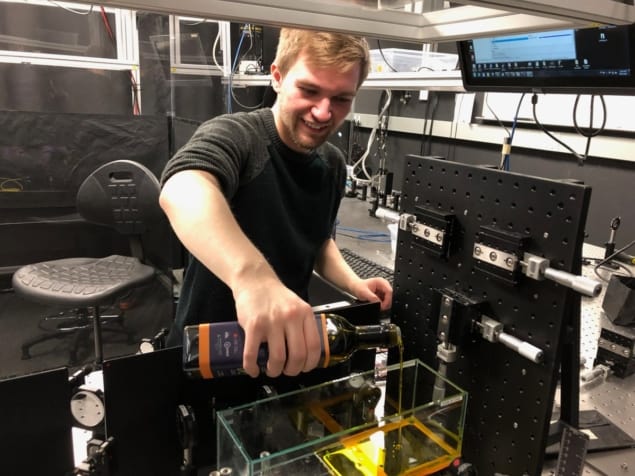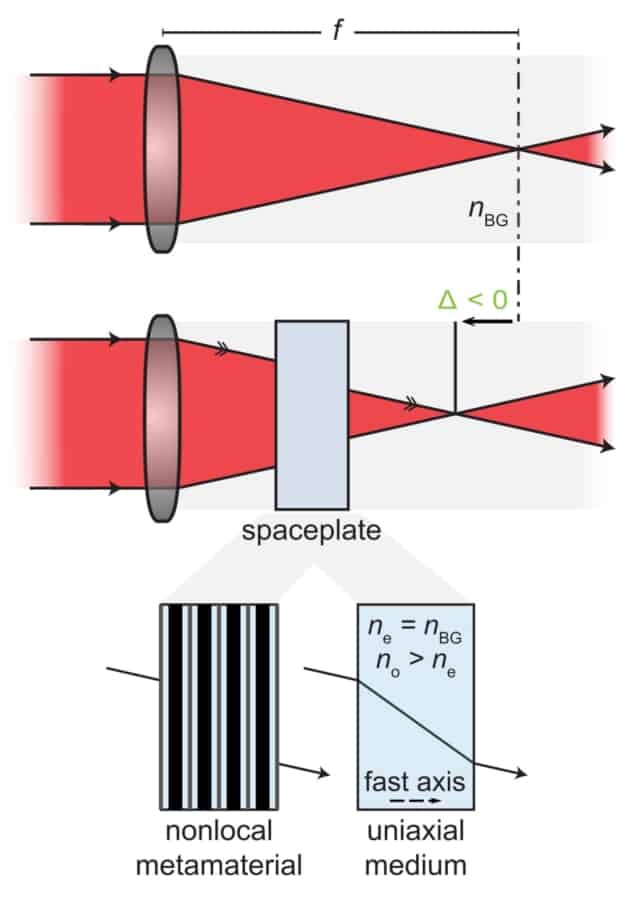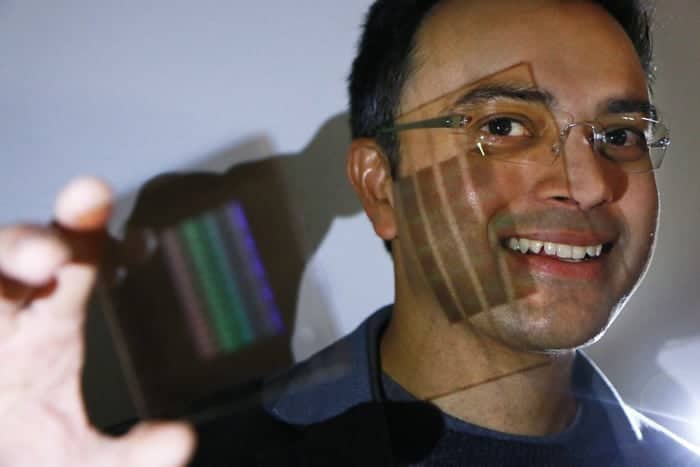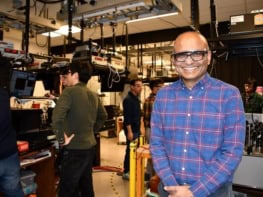
The drive to miniaturize optical systems has led to the design of many new devices, from Fresnel lenses to metamaterial wave-plates. However, most optical systems still contain empty space between components – think of the empty barrel between the lenses of a telescope or the camera bump on the back of a smartphone – that could be further reduced. Now, researchers in Canada have tackled this issue and designed three different “spaceplates” that effectively compress space, reducing the size of optical devices and paving the way towards extremely compact optical systems.
Designing materials to squash space
It is relatively simple to stretch space in an optical system by allowing light to travel through a material of higher refractive index. But finding a material that has the opposite effect, compressing space instead of stretching it, is not an easy task. As well as being compressed, the beam of light should not change direction, and the phase and amplitude of the beam should appear exactly as if it had simply travelled a longer distance through empty space. This ideal material should also work over a broad range of frequencies and incident angles. Hence the team at the University of Ottawa, had a tricky problem to solve.
Orad Reshef, lead author of a paper in Nature Communications describing the work, summarized their approach to tackling this issue, “The spaceplate is a fundamentally different imaging element from any type of lens we’ve seen before. Whereas a lens operates on a beam of light as a function of position over the cross section of a beam, a spaceplate operates as a function of the light field’s momentum. It is one of the first optical elements that behaves this way.”

With these conditions in mind, the team had a few material options to try. A material with a lower refractive index than its surroundings would work, as would a carefully chosen uniaxial material like calcite – which has an index of refraction along one crystal axis (the extraordinary axis) that is different to the index of refraction along the other two axes. Another possibility is a structured material with optical properties designed to depend on the angle of the incident beam, known as a non-local material. The researchers explored these different approaches and proved that all three could be used to create a spaceplate.
Putting it to the test
Increasing the background refractive index by filling the beam line with oil was the starting point for their first experiment. The team aimed to measure the shift in the focal point of a focused beam after a spaceplate was added and find the compression factor – the factor by which the spaceplate shrinks the local region of space. When a 4.4 mm-long chamber filled with air was inserted into the oil in the path of the light, the focus of the beam was pulled forwards by 2.3 mm, which meant a compression factor of 1.48.
The second experiment involved placing the uniaxial crystal calcite into the oil-filled beam line, to make a 29.84 mm-long spaceplate that advanced the focus of a beam polarized along its extraordinary axis by 3.4 mm – a compression factor of 1.12, which was constant over a large range of incident angles.
However, the largest compression factor measured by the team was achieved using a non-local metamaterial in air. A genetic algorithm selected the ideal thicknesses of 25 alternating layers of silicon and silicon dioxide, and the result was a metamaterial with a refractive index that varies with the incident angle of the beam. This metamaterial was just over 10 μm thick and pulled forward the focus of a beam by 43.2 μm compared to the beam travelling in vacuum, setting the team’s record compression factor of 5.2.
Capturing an image
One thing we may be able to look forward to after this work is more compact lenses for cameras. To demonstrate this, a colour image of a painting (Canadian artist Emily Carr’s, War Canoes, Albert Bay, 1912) was taken inside a vat of glycerol. With the 30 mm long calcite spaceplate in place, the image was formed 3.4 mm closer to the object, with no additional aberrations.

Ultrathin lens is free of chromatic aberrations
Jeff Lundeen, the team’s principal investigator, shared his vision of the potential impacts of the team’s results: “The spaceplate illustrates a way of manipulating light that when combined with metasurfaces, could allow for completely general image processing, beyond what is possible with conventional computational processing of a recorded image.”
The combination of these very promising experimental results and the design of the super-compact metamaterial spaceplate, mean that surely the future of ultra-thin optical systems is closer than it looks.



